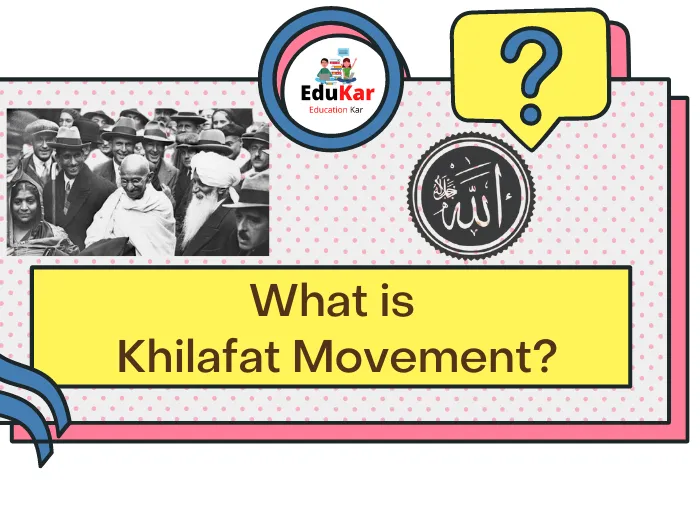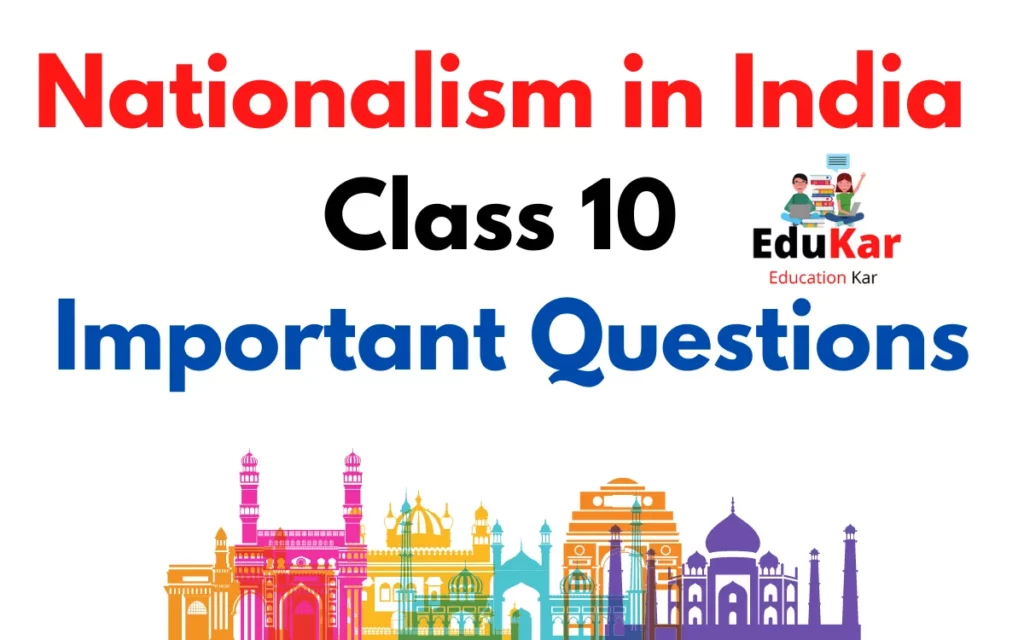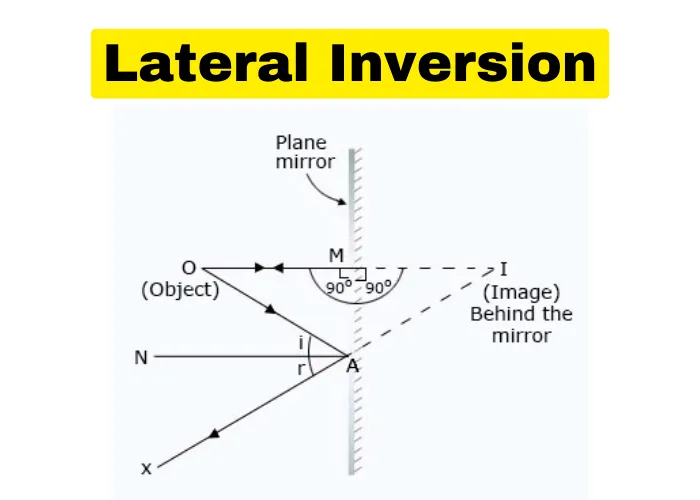Contents
- 1 When did the Khilafat Movement start and end?
- 2 What is the Khilafat Movement?
- 3 What were the main causes of the Khilafat Movement?
- 4 Question’s related to Khilafat Movement.
- 4.1 1. Who were the leaders of the Khilafat Movement?
- 4.2 2. How did the Khilafat Movement impact the Indian independence movement?
- 4.3 3. What were the demands of the Khilafat Movement?
- 4.4 4. What role did Mahatma Gandhi play in the Khilafat Movement?
- 4.5 5. How did the Khilafat Movement shape Muslim identity in India?
- 4.6 6. What was the relationship between the Khilafat Movement and the Non-Cooperation Movement?
- 4.7 7. What were the outcomes of the Khilafat Movement?
- 4.8 8. How did the British government respond to the Khilafat Movement?
- 4.9 9. What was the impact of the Khilafat Movement on the Ottoman Empire?
- 4.10 10. Did the Khilafat Movement succeed in achieving its goals, and why or why not?

When did the Khilafat Movement start and end?
The Khilafat Movement started in India in 1919 and ended in 1924. The movement was initiated in response to the British government’s decision to abolish the Islamic caliphate, which was the political and religious authority of the Ottoman Empire. The caliphate had been in existence for centuries and was highly revered by Muslims around the world, including in India. The Khilafat Movement was a pan-Islamic movement that aimed to rally support for the Ottoman caliphate and protect its sovereignty. The movement saw large-scale protests, strikes, and demonstrations across India, and was supported by both Hindus and Muslims. However, it ultimately failed to achieve its goals, as the Ottoman caliphate was abolished by the Turkish government in 1924.
What is the Khilafat Movement?
The Khilafat Movement was a pan-Islamic movement that originated in India in 1919. The movement was launched by Indian Muslims in response to the British government’s decision to abolish the Islamic caliphate, which was the political and religious authority of the Ottoman Empire. The caliphate had been in existence for centuries and was highly revered by Muslims around the world, including in India. The Khilafat Movement aimed to rally support for the Ottoman caliphate and protect its sovereignty. The movement saw large-scale protests, strikes, and demonstrations across India, and was supported by both Hindus and Muslims. The movement was closely linked to the Indian independence movement, and many of its leaders went on to become prominent figures in the struggle for Indian independence. Despite its widespread support, the Khilafat Movement ultimately failed to achieve its goals, as the Ottoman caliphate was abolished by the Turkish government in 1924.
What were the main causes of the Khilafat Movement?
The Khilafat Movement had several main causes:
- The abolition of the Ottoman caliphate: The main cause of the Khilafat Movement was the British government’s decision to abolish the Islamic caliphate, which was the political and religious authority of the Ottoman Empire. This decision was deeply upsetting to many Muslims around the world, including in India, who saw it as an attack on their religion and their way of life.
- The British government’s policies towards Muslims: Many Indian Muslims felt that the British government was discriminating against them and treating them unfairly. They were unhappy with the government’s policies towards Muslims, including its support for the Zionist movement in Palestine.
- Support for the Ottoman Empire: Many Indian Muslims saw themselves as part of a global Islamic community, and felt a strong connection to the Ottoman Empire. They were deeply upset by the empire’s defeat in World War I and the subsequent dismantling of its territories.
- The desire for self-determination: The Khilafat Movement was closely linked to the Indian independence movement, and many of its leaders saw it as an opportunity to assert their demands for self-determination and independence from British rule. They believed that by supporting the Ottoman caliphate, they could strengthen their own cause for independence.
1. Who were the leaders of the Khilafat Movement?
Ans. The Khilafat Movement had several prominent leaders who played key roles in mobilizing support for the movement. Some of the most important leaders of the Khilafat Movement were:
- Maulana Mohammad Ali Jauhar: He was a prominent Muslim leader and journalist who played a leading role in the Khilafat Movement. He was the president of the All India Khilafat Committee and was a vocal advocate for the movement’s demands.
- Maulana Shaukat Ali: He was the younger brother of Maulana Mohammad Ali Jauhar and was also a prominent Muslim leader. He played an important role in organizing the Khilafat Movement’s protests and demonstrations.
- Mahatma Gandhi: Although Gandhi was not a Muslim, he was a key supporter of the Khilafat Movement and saw it as an opportunity to build unity between Hindus and Muslims in the struggle for Indian independence.
- Abul Kalam Azad: He was a prominent Muslim scholar and nationalist leader who played a leading role in the Khilafat Movement. He later went on to become India’s first Minister of Education.
- Hasrat Mohani: He was a poet and politician who was a prominent leader in the Khilafat Movement. He coined the slogan “Inquilab Zindabad” (“Long Live the Revolution”), which became a popular rallying cry for the movement’s supporters.
These leaders, along with many others, played key roles in mobilizing support for the Khilafat Movement and organizing its protests and demonstrations.
2. How did the Khilafat Movement impact the Indian independence movement?
Ans. The Khilafat Movement had a significant impact on the Indian independence movement. Here are some ways in which it influenced the movement:
- Uniting Hindus and Muslims: The Khilafat Movement provided an opportunity for Hindus and Muslims to come together and unite in their struggle against British colonial rule. This unity was a major factor in the success of the Indian independence movement.
- Increasing political consciousness: The Khilafat Movement helped to raise political consciousness among Indian Muslims, who were inspired by the movement’s call for self-determination and sovereignty. This, in turn, helped to strengthen the broader Indian independence movement.
- Giving impetus to the Non-Cooperation Movement: The Khilafat Movement played a key role in the Non-Cooperation Movement, which was launched by Mahatma Gandhi in 1920. The movement aimed to boycott British goods and institutions and to promote Indian self-reliance. The Khilafat Movement’s support helped to galvanize the Non-Cooperation Movement and give it greater momentum.
- Inspiring future leaders: Many of the leaders of the Khilafat Movement went on to become prominent figures in the Indian independence movement, including Maulana Mohammad Ali Jauhar, Maulana Shaukat Ali, and Abul Kalam Azad. Their experiences in the Khilafat Movement helped to shape their vision for India’s future and their strategies for achieving independence.
3. What were the demands of the Khilafat Movement?
Ans. The Khilafat Movement had several demands, which were primarily focused on protecting the Ottoman caliphate and promoting the interests of Indian Muslims. Here are some of the key demands of the movement:
- Restoration of the Ottoman caliphate: The main demand of the Khilafat Movement was the restoration of the Ottoman caliphate, which was the political and religious authority of the Ottoman Empire. The movement called on the British government to reverse its decision to abolish the caliphate and to support the caliphate’s continued existence.
- Protection of Muslim holy places: The Khilafat Movement demanded that Muslim holy places in the Ottoman Empire, including Jerusalem and Mecca, be protected from foreign control and influence.
- Representation for Indian Muslims: The movement demanded greater representation for Indian Muslims in the Indian National Congress and in the colonial government. Many Muslims felt that they were being discriminated against and excluded from the political process, and the Khilafat Movement sought to address this issue.
- Protection of Muslim rights: The Khilafat Movement called for the protection of Muslim rights and interests, including the right to practice their religion freely and to participate fully in the political process.
4. What role did Mahatma Gandhi play in the Khilafat Movement?
Ans. Mahatma Gandhi played a significant role in the Khilafat Movement, which he saw as an opportunity to build unity between Hindus and Muslims in the struggle for Indian independence. Here are some ways in which Gandhi contributed to the Khilafat Movement:
- Support for the Khilafat cause: Gandhi was a vocal supporter of the Khilafat Movement and its demands for the restoration of the Ottoman caliphate. He saw the cause as a way to unite Muslims and Hindus against British colonial rule and promote the idea of Indian independence.
- Mobilization of support: Gandhi used his influence and platform to mobilize support for the Khilafat Movement. He helped to organize protests and demonstrations in support of the movement, which helped to bring greater attention to its demands.
- Integration with the Non-Cooperation Movement: In 1920, Gandhi launched the Non-Cooperation Movement, which aimed to boycott British goods and institutions and promote Indian self-reliance. He integrated the Khilafat Movement into this broader campaign, which helped to give it greater momentum and support.
- Unity between Hindus and Muslims: Gandhi saw the Khilafat Movement as an opportunity to build unity between Hindus and Muslims, who had historically been divided by religious and political differences. He believed that the movement could help to bridge these divides and promote greater cooperation and understanding between the two communities.
5. How did the Khilafat Movement shape Muslim identity in India?
Ans. The Khilafat Movement had a significant impact on the identity of Indian Muslims, shaping their sense of political and religious consciousness. Here are some ways in which the movement influenced Muslim identity in India:
- Unity and solidarity: The Khilafat Movement provided an opportunity for Indian Muslims to come together and unite around a common cause. This sense of unity and solidarity helped to strengthen Muslim identity and promote a shared sense of purpose and identity.
- Emphasis on Islamic identity: The Khilafat Movement emphasized the importance of Islamic identity and sovereignty, which helped to reinforce Muslim identity in India. The movement’s demand for the protection of the Ottoman caliphate and Muslim holy places helped to promote the idea of a shared Islamic identity among Indian Muslims.
- Political consciousness: The Khilafat Movement helped to raise political consciousness among Indian Muslims, who became more aware of their rights and interests as a community. The movement’s demands for greater representation and protection of Muslim rights helped to shape Muslim political identity in India.
- Integration with the Indian independence movement: The Khilafat Movement was integrated with the broader Indian independence movement, which helped to shape Muslim identity as a part of the larger Indian national identity. Many Indian Muslims saw themselves as both Muslims and Indians, with a shared sense of purpose and identity.
6. What was the relationship between the Khilafat Movement and the Non-Cooperation Movement?
Ans. The Khilafat Movement and the Non-Cooperation Movement were closely related and intertwined with each other. Here are some ways in which the two movements were connected:
- Common goals: Both the Khilafat Movement and the Non-Cooperation Movement had similar goals, including the demand for greater political representation and the promotion of Indian self-rule. The Khilafat Movement’s demand for the protection of the Ottoman caliphate and the Non-Cooperation Movement’s demand for Indian independence were seen as complementary causes.
- Gandhi’s leadership: Mahatma Gandhi was a key leader of both the Khilafat Movement and the Non-Cooperation Movement. He integrated the Khilafat demands into the broader Non-Cooperation Movement, which helped to give it greater momentum and support.
- Mobilization of support: The Khilafat Movement and the Non-Cooperation Movement both mobilized support through mass protests and civil disobedience. Many of the same activists and organizers were involved in both movements, and they shared a common commitment to non-violent resistance.
- Impact on Indian politics: The Khilafat Movement and the Non-Cooperation Movement had a significant impact on Indian politics, contributing to the growth of Indian nationalism and the eventual achievement of Indian independence. The movements helped to raise political consciousness among Indians and create a sense of unity and solidarity in the struggle against colonial rule.
7. What were the outcomes of the Khilafat Movement?
Ans. The Khilafat Movement had both short-term and long-term outcomes, and here are some of them:
- Withdrawal of support: The Khilafat Movement was ultimately unsuccessful in achieving its primary goal of protecting the Ottoman caliphate. The British government did not heed the demands of the movement, and the caliphate was abolished in 1924. This led to the withdrawal of support for the movement.
- Integration with the Non-Cooperation Movement: The Khilafat Movement was integrated with the Non-Cooperation Movement, which helped to give it greater momentum and support. The two movements together helped to raise political consciousness among Indians and create a sense of unity and solidarity in the struggle against colonial rule.
- Rise of Muslim political identity: The Khilafat Movement helped to reinforce Muslim political identity in India, emphasizing the importance of Muslim representation and rights. This led to the growth of Muslim political parties and the eventual partition of India on religious lines in 1947.
- Legacy of non-violent resistance: The Khilafat Movement helped to establish non-violent resistance as a powerful tool for achieving political goals. This legacy was carried forward by Mahatma Gandhi and other Indian nationalist leaders, who used non-violent resistance to challenge colonial rule and achieve Indian independence.
8. How did the British government respond to the Khilafat Movement?
Ans. The British government responded to the Khilafat Movement with a combination of repression and attempts at co-optation. Here are some of the ways in which the British government responded:
- Repression: The British government responded to the Khilafat Movement with repression, including the use of police force to break up protests and the arrest of movement leaders. The government also banned certain Khilafat publications and restricted the movement’s activities.
- Co-optation: In addition to repression, the British government attempted to co-opt the Khilafat Movement by engaging in negotiations with its leaders. The government offered some concessions, such as the release of political prisoners and the restoration of some civil liberties.
- Division: The British government also attempted to divide the Khilafat Movement by highlighting the differences between its leaders and the Indian National Congress. The government hoped to create a rift between the two movements, which would weaken their collective power.
- Propaganda: The British government also used propaganda to discredit the Khilafat Movement and portray it as a threat to the stability of the British Raj. The government spread rumors and false information about the movement, and attempted to stir up communal tensions between Hindus and Muslims.
9. What was the impact of the Khilafat Movement on the Ottoman Empire?
Ans. The Khilafat Movement had a significant impact on the Ottoman Empire, particularly in terms of its internal politics and its relationship with India. Here are some of the key impacts:
- Strengthened Pan-Islamism: The Khilafat Movement helped to strengthen the idea of Pan-Islamism, which emphasized the unity of the Islamic world. This had a profound impact on the Ottoman Empire, which saw itself as the protector of the Islamic faith and the caliphate.
- Increased pressure on the Ottoman government: The Khilafat Movement brought international attention to the plight of the Ottoman Empire and put pressure on its government to defend the caliphate. This led to increased political and diplomatic activity on the part of the Ottoman government, as it sought to rally support for its cause.
- Raised hopes for Ottoman independence: The Khilafat Movement raised hopes among some Ottoman nationalists that the movement could help to secure greater autonomy or even independence for the Ottoman Empire. However, these hopes were largely dashed when the caliphate was abolished in 1924.
- Contributed to the downfall of the Ottoman Empire: The Khilafat Movement was one of many factors that contributed to the downfall of the Ottoman Empire. The movement helped to distract the Ottoman government from addressing pressing domestic and international challenges, and contributed to its increasing isolation on the world stage.
10. Did the Khilafat Movement succeed in achieving its goals, and why or why not?
Ans. The Khilafat Movement did not ultimately succeed in achieving its main goals. Here are some of the reasons why:
- The Khilafat Movement’s demands were not fully met: The Khilafat Movement demanded the restoration of the Ottoman caliphate and the protection of Muslim holy sites, but these demands were not fully met by the British government or the international community.
- Internal divisions weakened the movement: The Khilafat Movement was beset by internal divisions, particularly between its leaders and the Indian National Congress. These divisions weakened the movement’s ability to mobilize and ultimately contributed to its decline.
- Repression and propaganda: The British government responded to the Khilafat Movement with repression and propaganda, which helped to weaken the movement’s impact and contribute to its eventual decline.
- Changing global politics: The Khilafat Movement emerged at a time of great upheaval and shifting global politics, including the end of World War I and the decline of the Ottoman Empire. These factors made it difficult for the movement to achieve its goals.
Despite these challenges, the Khilafat Movement had a significant impact on India’s struggle for independence and on the broader international Muslim community. The movement helped to mobilize Muslims in India and abroad, and contributed to the development of a strong sense of Muslim identity in India. It also helped to raise awareness of the plight of the Ottoman Empire and the importance of protecting Muslim holy sites. While the movement did not achieve its main goals, it played an important role in shaping the course of history in India and beyond.





![Zoology Important Questions [Class 11th-English medium] Zoology Important Questions class 10 english medium](https://edukar.in/wp-content/uploads/2022/09/Zoology-Important-Questions-class-10-english-medium-1024x597.webp)
![Corporate Accounting [Important Questions & Answers with MCQ] Corporate Accounting Important Questions & Answers](https://edukar.in/wp-content/uploads/2022/09/Corporate-Accounting-Important-Questions-Answers-1024x597.webp)

![Biology Class 10 Very important [Questions &Answers] Biology Important Questions with Answers class 10](https://edukar.in/wp-content/uploads/2022/09/Biology-Important-Questions-with-Answers-class-10-1024x597.webp)
![Web application and Security Class 10 [Questions Answers & MCQs] Web application Class 10 Questions & Answers](https://edukar.in/wp-content/uploads/2022/09/Web-application-Class-10-Questions-Answers-1024x597.webp)


![Digital Documentation Class 9 [Questions Answers & MCQ] Digital Documentation Class 9](https://edukar.in/wp-content/uploads/2022/08/Digital-Documentation-Class-9-1024x597.webp)



